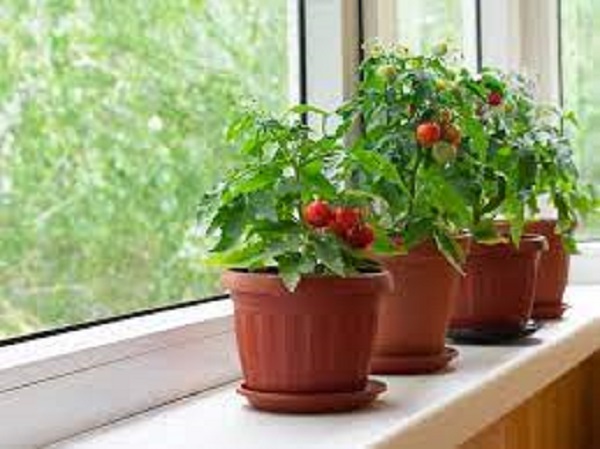
As my cucumber vine stretches from one side of the greenhouse to the other, suspended with hanging rods from the ceiling, and loaded with growing cucumbers, I am left pondering the distance most of the food we eat in the Midwest must travel before it ends up on our dinner plates.
If tomatoes are going to travel an average of 1,500 miles during the summer months, a shocking, but true, statistic for most produce grown in the United States, they must be hybridized so they will stay round and red without getting blemished, soft, or dented on their trip to our local produce aisle. They may look nice, but they won’t have much flavor and will have minimal nutritional value. If you like cucumbers and tomatoes or are concerned about the nutritional value of the food you eat, you should think about indoor winter gardening. Gardeners can grow a wide variety of plants indoors in containers.
Keep in mind that leafy vegetables and herbs require less light than those varieties that produce blossoms, such as tomatoes, green peppers, and eggplants to name a few. However, if you still want to have vine ripened tomatoes during the winter months, a low wattage, high lumen output light system will provide the correct spectrums (to keep the plants healthy) while allowing them to produce blossoms and ripen the fruit and will only cost pennies a day to operate.
You will need to start with a container three to four times larger than the plants you will be using, with good drainage holes in the bottom. For example, I use a 20” container for my tomatoes. I also add 14” containers to grow other plants with a shorter life span which prevents their root ball from becoming too large for the smaller container. I then fill the remaining area of the container with a sterile, soilless potting mixture. This gives the tomatoes enough room to produce a large root ball and produce for several years.
I use an organic potting mix then add worm castings from my vermicomposter, but you can use any high end soilless potting mix. You should also add additional fertilizer after about three months. This includes mixes that are pre-fertilized, because as plants begin to grow and produce blossoms and fruit, they must consume a steady supply of fertilizer to stay healthy.
Reducing Winter Heating Costs in the Greenhouse
To help keep the cost of heating my greenhouse to 55 degrees on the coldest nights, I’ve taken several winterization steps, such as leaving the shade cloth on to trap the heat on the ceiling and creating an extra insulating barrier by lining the inside of the greenhouse with bubble wrap on the North, East and West walls. The bubble wrap helps create a cold barrier, while still allowing the sun’s rays to enter the greenhouse during the day. I’ve noticed since I started doing this, that my heaters hardly run at all during the daylight hours with the greenhouse temperature reaching 70-78 degrees; making me feel like I took a trip to Mexico, but without the cramped seating, crying babies, long lines to get through security, or the need for luggage, that goes on its own trip around the continent. Always try to place your free-standing greenhouse facing North and South, that way you are not trying to heat a long side wall in the dead of winter.
What if You Don’t Have a Greenhouse
For those of you who don’t have a greenhouse, and/or don’t want the expense of heating it during the winter months, you can grow most plants, including tomatoes, indoors. Once you decide on a container and good location (a southern exposure or well insulated patio door work best), the next thing to choose are plants that can grow indoors. Choose stocky compact plants that offer the biggest harvest without an inconvenient loss of space. Some varieties such as cherry tomatoes, dwarf peppers, carrots, radishes, baby Boston lettuce, leaf lettuce, spinach and mustard greens can all be grown in a relatively small area. Strawberries can also thrive indoors. For strawberries to get the maximum amount of fruit, try using a strawberry pot. The plants spill down the sides of the pot allowing for maximum sunlight absorbency, and the berries are easy to pick.
Even if you don’t have room for a strawberry pot or salad garden, you can still grow fresh herbs on a windowsill. There are several windowsill herb containers on the market today, that allow for even the smallest apartment dwellers to grow an indoor garden. Herb gardens can be as simple as one or two varieties, such as basil or parsley. Chives, rosemary, sage, thyme, and cilantro will also work. Not only do they smell good, but they can also be pinched off and added to your favorite dishes to offer a burst of fresh flavor as well as healthy nutrition.
Paula M. Christensen has over 20 years of experience gardening year-round as a hobby greenhouse gardener and incorporates natural and organic feed and insect management practices.
Related Articles & Free Email Newsletter Sign Up
A Basic Plan for Winter Vegetable Gardening
How to Heat a Greenhouse During Winter



Comment here